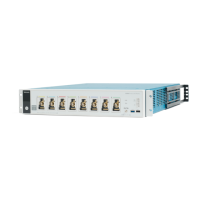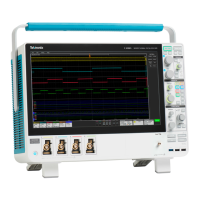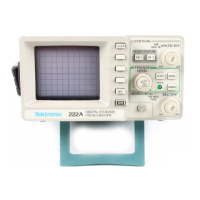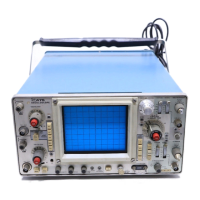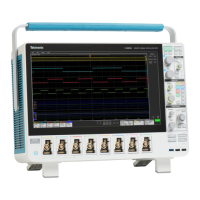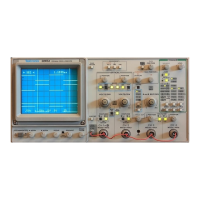Trigger sources
The trigger source provides the signal that triggers acquisition. Use a trigger source that is synchronized with the signal that you
are acquiring and displaying.
You can derive your trigger from the following sources:
■
Input channels. Analog input channels are the most commonly used trigger sources. You can select any of the input
channels. The channel that you select as a trigger source will function whether it is displayed or not.
■
Digital channels. These sources are available if you have a digital probe connected to a FlexChannel. You can select any
combination of digital channels.
■
Bus. This source is used to trigger a parallel bus or a serial bus. You can include any combination of analog, math, or digital
channels to build a parallel bus, or use any channel as a component in a serial bus.
Trigger types
The available trigger types include:
Edge. This is the simplest and most commonly used trigger type, used with both analog and digital signals. An edge trigger event
occurs when the trigger source passes through a specified voltage level in the specified direction (rising or falling signal voltage).
Pulse Width. Trigger on pulses that are inside or outside a specified time range. Can trigger on positive or negative pulses.
Timeout. Trigger when no edge transition is detected within a specified time.
Runt. Use Runt trigger to trigger on a pulse amplitude that crosses one threshold but fails to cross a second threshold before
recrossing the first. Can detect positive or negative runts, or only those wider than a specified width. These pulses can also be
qualified by the logical state of other channels.
Window. Use the Window trigger to trigger when the input signal rises above an upper threshold level or falls below a lower
threshold level. Trigger the instrument as the signal is entering or leaving the threshold window. Qualify the trigger event in terms
of time by using the Trigger When Wider option, or by the logical state of other channels using the Trigger When Logic option.
Logic. These are special-purpose triggers that are primarily used with digital logic signals. Logic triggers are available on the
main and B event triggers.
Setup & Hold. Trigger when a logic input changes state inside the setup and hold times relative to the clock. This type triggers
on a setup and hold violation.
Rise/Fall Time. Trigger on pulse edges that traverse between two thresholds at faster or slower rates than the specified time.
The pulse edges can be positive or negative.
Sequence. Use the A Trigger Event with the B Trigger Event to capture complex data.
Bus. This trigger is used with both analog and digital signals to set up parallel buses or serial buses. A bus trigger event occurs
when the instrument detects a bus pattern that you specify for a parallel bus, or a bus cycle you select for a serial bus. A bus is
defined in a bus menu.
■
Parallel. Use to trigger on Parallel bus signals.
■
I
2
C. Use to trigger on Inter-IC signals: start, stop, repeated start, missing acknowledge, address, data, and address and
data.
■
SPI. Use to trigger on Serial Peripheral Interface signals.
■
RS-232. Use to trigger on RS-232 signals.
Trigger concepts
420 MSO54, MSO56, MSO58, MSO58LP, MSO64 Help
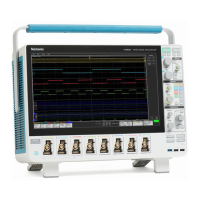
